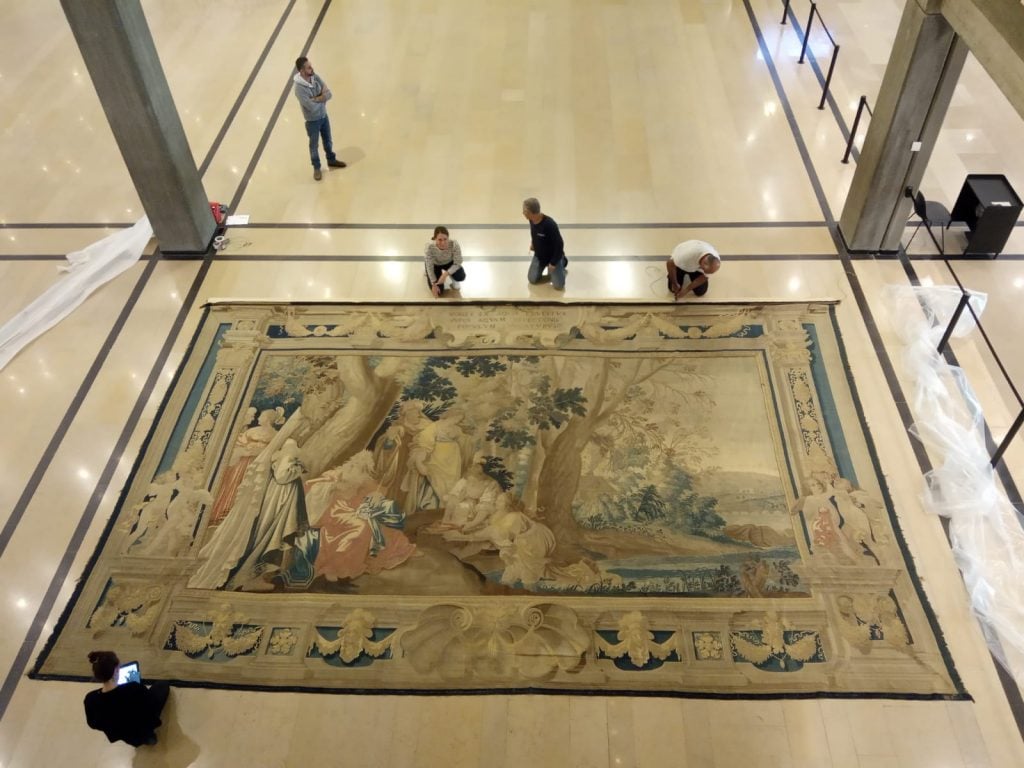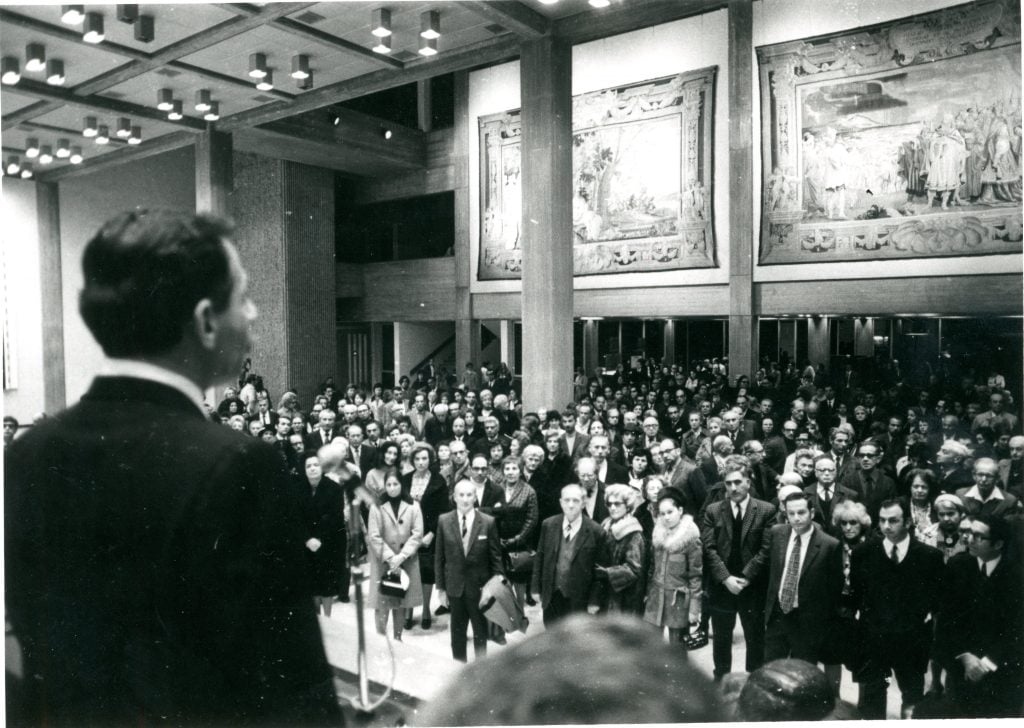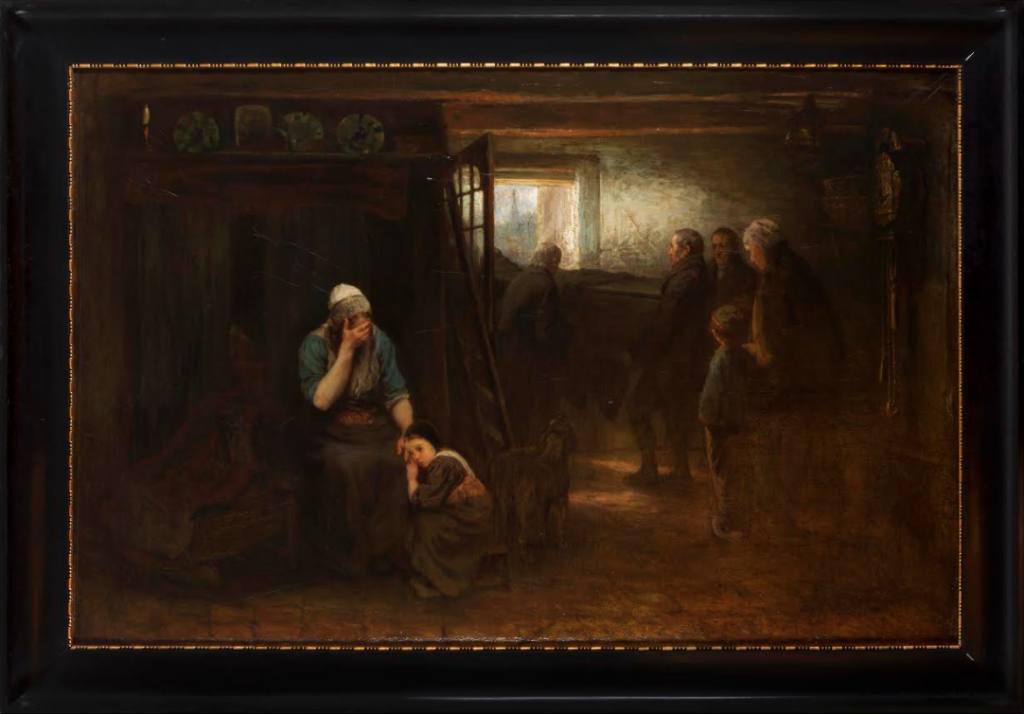Law & Politics
The Tel Aviv Museum of Art Will Restitute Two 17th-Century Tapestries of Moses Looted by the Nazis in the 1930s
The artworks were taken from a German-Jewish family that ran a prominent liberal newspaper.

The artworks were taken from a German-Jewish family that ran a prominent liberal newspaper.

Taylor Dafoe

The Tel Aviv Museum of Art in Israel has begun the process of restituting two 17th-century Flemish tapestries looted by the Nazis during the German Reich.
The objects will be returned to the heirs of Rudolf Mosse, a prominent German publisher who amassed an impressive personal art collection before his death in 1920. The collection was subsequently handed down to his daughter and son-in-law, Felicia and Hans Lachmann-Mosse—who ran the Mosse-founded liberal newspaper Berliner Tageblatt—before being seized by the Nazis in the early 1930s.
A spokesperson from the Tel Aviv Museum of Art did not provide a specific time frame for the tapestries’ return, but says the institution is finalizing the details of the arrangement now.
“Restitution is an ethical and professional obligation,” Tania Coen-Uzielli, director of the museum, said in a statement to Artnet News. “In recent years, the study of the provenance of works of art has become a major concern of museums around the world. Museums allocate major resources to provenance research, which is significant for providing historical justice.”

A picture from the opening of the Tel Aviv Museum of Art’s current building in 1971. The two 17th-century Flemish tapestries can be seen hanging in the background.
The two tapestries depict the biblical scenes of Moses being discovered in a basket along the Nile river and his later crossing of the Red Sea. They were purchased at auction in the 1960s by the Scottish businessman Sir Isaac Wolfson, who in turn donated them to the museum in 1971, according to the Times of Israel. The artworks were displayed in the museum’s lobby when its current building opened in 1971.
The museum was informed of the objects’ provenance two years ago by the Mosse Art Restitution Project, a Berlin-based initiative launched by the Mosse family to recover the many artworks taken from their German-Jewish descendants during Hitler’s reign. The tapestries were located in storage at the time.
It’s the second time the institution has worked with the Mosse Project to restitute an artwork. Four years ago, lawyers representing the project alerted the museum that its prized 19th- century painting From Darkness to Light by Dutch artist Jozef Israëls was among those looted by the Nazis after the Lachmann-Mosses were forced to flee Berlin.

Jozef Israels, From Darkness to Light. Courtesy of the Tel Aviv Museum of Art.
However, the Israels painting—a highlight of the Tel Aviv museum’s collection—did not technically change hands because the institution agreed to buy it back from the Mosse family at a price based on a present-day Sotheby’s estimate. The painting is now on loan to another venue, but when it returns to the walls of the museum, it will do so with a label that details its ownership history—including the restitution deal.
There is no such plan to purchase the tapestries, a museum spokesperson explained, noting that “they are less relevant to the scope and modern and contemporary character of the collection.”
A representative from the Mosse Art Restitution Project said that organization received signed restitution contracts from the museum today and that the tapestries will be picked up within a year.
“We celebrate every piece we locate,” a project coordinator for the Mosse Project, Meike Hoffmann, told the Times of Israel. “I have to say, though, I find it very difficult when we find a piece in Israel, because I don’t want them to have to give it back.”